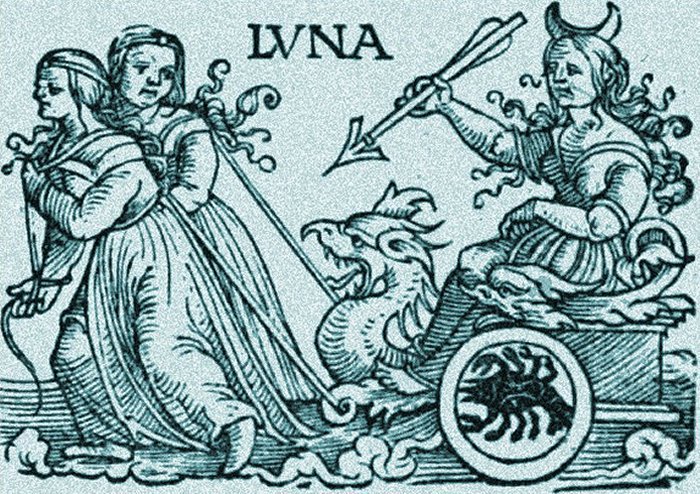Full Moon In Ancient Myths And Legends Of Our Ancestors
A. Sutherland - AncientPages.com - Full Moon is related to numerous ancient myths and legends and even paranormal tales.
Many different superstitions and beliefs influenced our ancestors who looked at the celestial ‘phenomenon’ – supermoon.
An ancient moon Goddess, the namesake for the Latin word luna meaning 'moon'. Her name also forms the root of the English words 'lunar' and 'lunatic'.
One of them says that when our Silver Globe is full and shines brightly, then we can expect the next day will beautiful weather. The occurrence of rainfall, on the other hand, was associated with a hazy moon surrounded by a white circle (‘halo’).
In earlier times, it was also believed that the red or transparent shield of the full moon was a harbinger of natural disasters, wars, and worst plague outbreaks. Also, the moon's effects date back to the legends and mythology of ancient civilizations. The full moon has been associated with strange or insane behavior, including sleepwalking, violence, and suicide.
In East Asia, it is seen as a rabbit pounding the ingredients for rice cake; in Chinese folklore, it is often portrayed as the rabbit companion of the Moon goddess Chang'e, constantly pounding the elixir of life for her.
In Aztec mythology, Tecciztecatl was a lunar deity, representing the old "man-in-the-moon". The 'Man in the Moon' refers to several images of a human face, head, or body that certain people in ancient times recognized in the disc of the full moon.
In some of the Aztec depictions, Tecciztecatl carried a large, white seashell on his back, representing the moon itself.
Talmudic tradition describes that the image of Jacob is engraved on the moon, and ancient Chinese tradition says a beautiful Chinese girl called Chango'e has been living there for 4,000 years. It is said she was banished to the moon because she stole the pill of immortality from her husband and consumed a double dose of it. She is accompanied by a small group of 'moon rabbits' that live on the Moon, an image that the human mind has perceived through the centuries, in the face of the Moon.
The story exists in many cultures, especially in East Asian folklore and Aztec mythology.
In East Asia, it is seen a rabbit pounding the ingredients for rice cake; in Chinese folklore, it is often portrayed as one of the rabbit companions of the Moon goddess Chang'e, constantly pounding the elixir of life for her. The Japanese also believed that the moon was a god with powers to foretell the future.
Left: A scribe writes at the feet of Thoth as a baboon with a lunar disk and crescent moon. Image via touregypt.net; Right: God Khonsu the Egyptian lunar god of fertility. His headdress consists of a crescent moon, topped by a full moon.
Algonquin (Algonquian) people had a myth of the medicine woman in the moon.; in fact, these Native American people have many different names for the ‘full moon’ through the year, which reflects on their strong connection with nature, hunting, fishing, and farming and the seasons they depended on.
An agricultural treatise dated to 15th century Spain states that in March, “melons, cucumbers, gourds, oats, sorghum, onions, and green beans can be sown in the waning moon.
Left: Prediction of fertility with the help of the Moon's phases; Right: Lunar god Chandra, Tibet
Cabbage seed and radishes in the old moon. Green beans and sorghum and spelled can be sown in the new moon. Graft fig trees and other trees in the waxing moon.”
S. S. Tomkins, in his book "In Affect Imagery Consciousness" writes that "the rays of Luna, goddess of the moon, have long been regarded as the cause of lunacy and cites Roger Bacon, who believed that "many have died from not protecting themselves from the rays of the moon..."
In the religion of ancient Egypt, the moon has played an important role, though it was only considered the nightly replacement of the sun because the Sun was the most important to them.
In depictions, the moon was commonly represented as a combination of the full-moon disk with the crescent moon.
Lunar gods were almost always shown with this symbol on their heads.
Khonsu was the Egyptian lunar god of fertility on his head he wore a crown or headdress consisting of a crescent moon, topped by a full moon. The moon god Khonsu, was described as the pendulum of heaven and precise divider of months.
Written by A. Sutherland - AncientPages.com Staff Writer
Copyright © AncientPages.com All rights reserved. This material may not be published, broadcast, rewritten or redistributed in whole or part without the express written permission of AncientPages.com
More From Ancient Pages
-
 Rapa Nui’s Population: Growth And Decline – Lesson For Our Future?
News | Sep 4, 2020
Rapa Nui’s Population: Growth And Decline – Lesson For Our Future?
News | Sep 4, 2020 -
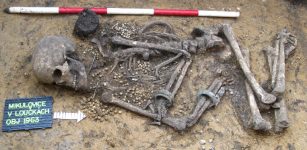 Central European Prehistory Was Highly Dynamic – New Study Shows
Archaeology | Aug 27, 2021
Central European Prehistory Was Highly Dynamic – New Study Shows
Archaeology | Aug 27, 2021 -
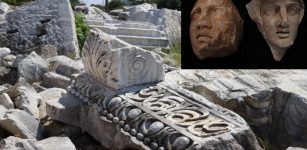 Once Impressive Temple Of Hadrian In City Of Cyzicus Will Be Restored Soon
Archaeology | Sep 7, 2020
Once Impressive Temple Of Hadrian In City Of Cyzicus Will Be Restored Soon
Archaeology | Sep 7, 2020 -
 Golosov Ravine – Mysterious Time-Warping Mist Causing Unexplained Disappearances And The Ancient Shrine Of God Veles
Featured Stories | Jul 3, 2021
Golosov Ravine – Mysterious Time-Warping Mist Causing Unexplained Disappearances And The Ancient Shrine Of God Veles
Featured Stories | Jul 3, 2021 -
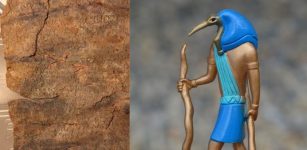 Curse Of The Dancer – Mysterious 1,500-Year-Old Tablet Finally Deciphered
Archaeology | Oct 14, 2019
Curse Of The Dancer – Mysterious 1,500-Year-Old Tablet Finally Deciphered
Archaeology | Oct 14, 2019 -
 Bizarre Sound Of A Crash Remains An Unexplained Mystery
Featured Stories | Oct 22, 2020
Bizarre Sound Of A Crash Remains An Unexplained Mystery
Featured Stories | Oct 22, 2020 -
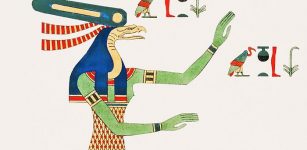 Wadjet – Egyptian Goddess Protected Pharaohs And Was Depicted As A Cobra-Uraeus
Egyptian Mythology | May 29, 2021
Wadjet – Egyptian Goddess Protected Pharaohs And Was Depicted As A Cobra-Uraeus
Egyptian Mythology | May 29, 2021 -
 Trolls – Fascinating Mythical Creatures Of Scandinavia
Featured Stories | Jun 13, 2022
Trolls – Fascinating Mythical Creatures Of Scandinavia
Featured Stories | Jun 13, 2022 -
 10 Christian Symbols Explained
Ancient Symbols | Jul 28, 2018
10 Christian Symbols Explained
Ancient Symbols | Jul 28, 2018 -
 New Study Challenges Theories Of Earlier Human Arrival In Americas – Archaeological Evidence Has Been Misinterpreted – Scientists Say
Archaeology | Apr 21, 2022
New Study Challenges Theories Of Earlier Human Arrival In Americas – Archaeological Evidence Has Been Misinterpreted – Scientists Say
Archaeology | Apr 21, 2022 -
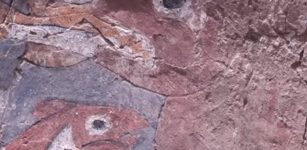 1,700-Year-Old Moche Culture Ceremonial Banquet Hall Discovered In Peru
Archaeology | Jan 12, 2018
1,700-Year-Old Moche Culture Ceremonial Banquet Hall Discovered In Peru
Archaeology | Jan 12, 2018 -
 Little Known Neanderthal Technology Examined – Turning Bones Into Tools
Archaeology | Jun 19, 2023
Little Known Neanderthal Technology Examined – Turning Bones Into Tools
Archaeology | Jun 19, 2023 -
 The Use Of Surnames Started During The Middle Ages In England
Ancient History Facts | Feb 23, 2016
The Use Of Surnames Started During The Middle Ages In England
Ancient History Facts | Feb 23, 2016 -
 Mystery Of The Ancient Lost Megalithic City Of Nhambiquaras And The Curious Roman Figurine
Featured Stories | Mar 4, 2022
Mystery Of The Ancient Lost Megalithic City Of Nhambiquaras And The Curious Roman Figurine
Featured Stories | Mar 4, 2022 -
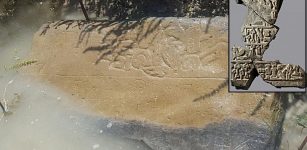 Lost City That May Have Defeated King Midas’ Kingdom Phrygia – Found Accidentally
Archaeology | Feb 23, 2020
Lost City That May Have Defeated King Midas’ Kingdom Phrygia – Found Accidentally
Archaeology | Feb 23, 2020 -
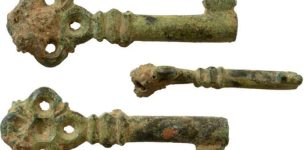 Intriguing Beautiful Medieval Key Discovered In Claverham Village, UK
Artifacts | Oct 10, 2023
Intriguing Beautiful Medieval Key Discovered In Claverham Village, UK
Artifacts | Oct 10, 2023 -
 Unraveling The Mystery Why Experienced Norse Sailors Feared The Oceans And Seas
Myths & Legends | Oct 8, 2024
Unraveling The Mystery Why Experienced Norse Sailors Feared The Oceans And Seas
Myths & Legends | Oct 8, 2024 -
 Deciphered Ancient Stone Tablets Contain Sacred Knowledge That Could Re-Write History
Ancient Mysteries | Aug 28, 2018
Deciphered Ancient Stone Tablets Contain Sacred Knowledge That Could Re-Write History
Ancient Mysteries | Aug 28, 2018 -
 Beautiful Ancient City Of Polonnaruwa With Hundred Of Tombs, Temples And Statues
Civilizations | Nov 12, 2018
Beautiful Ancient City Of Polonnaruwa With Hundred Of Tombs, Temples And Statues
Civilizations | Nov 12, 2018 -
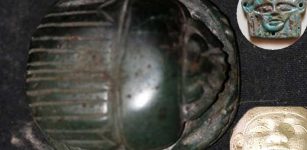 Amulets, Figurines Discovered In Recently Unearthed Limestone Sarcophagus In Minya, Egypt
Archaeology | Oct 15, 2020
Amulets, Figurines Discovered In Recently Unearthed Limestone Sarcophagus In Minya, Egypt
Archaeology | Oct 15, 2020

